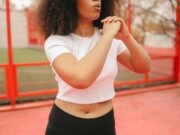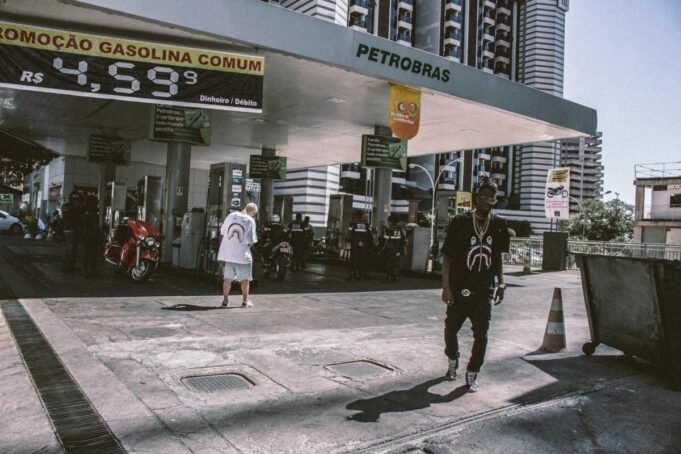Streetwear isn't merely a fashion trend; it's a cultural movement that has taken the world by storm. From its humble beginnings in the skate parks and hip-hop scenes of the 1980s and 1990s to its current status as a global fashion phenomenon, streetwear has evolved into a powerful form of self-expression. Defined as a relaxed, urban-inspired clothing style with roots in countercultures like hip-hop, skateboarding, and surfing, streetwear has captured the hearts and wardrobes of fashion enthusiasts worldwide. In this comprehensive guide, we'll dive deep into the world of streetwear, exploring its rich history, defining characteristics, top brands, styling tips, and future trends.
The History & Evolution of Streetwear
Origins in Surf and Skate Culture
Streetwear's story begins in the laid-back surf and skate communities of California in the 1980s and 1990s. Brands like Stussy and Supreme emerged, catering to the rebellious spirit and casual aesthetic of these subcultures. Stussy, founded by Shawn Stussy in 1980, began as a small operation selling printed T-shirts and caps to surfers. Supreme, established by James Jebbia in 1994, initially catered to skateboarders with its edgy, graphic-driven designs.
Hip-Hop's Influence
As hip-hop music gained mainstream popularity in the 1980s and 1990s, it also began to shape the streetwear landscape. Artists like Run-DMC and LL Cool J popularized brands like Adidas and Kangol, making them synonymous with hip-hop style. Labels like FUBU (For Us, By Us) and Rocawear, founded by rap moguls Daymond John and Jay-Z respectively, further cemented the link between hip-hop and streetwear.
The Rise of Japanese Streetwear
In the late 1990s and early 2000s, Japanese brands like A Bathing Ape (BAPE) and Undercover began to gain international recognition. These labels, known for their bold graphics, unique collaborations, and limited-edition drops, helped push streetwear into the global spotlight. BAPE, founded by Nigo in 1993, became particularly influential with its signature camo prints and shark hoodies.
Streetwear Meets High Fashion
As streetwear's popularity grew, it began to catch the attention of the luxury fashion world. Designers like Raf Simons and Virgil Abloh (founder of Off-White) started incorporating streetwear elements into their high-end collections, blurring the lines between street style and haute couture. This fusion reached new heights when Louis Vuitton appointed Abloh as its artistic director of menswear in 2018, marking a significant milestone in streetwear's journey to the top of the fashion hierarchy.
Elements of Streetwear Style
Graphic T-Shirts and Bold Prints
One of the most recognizable aspects of streetwear is the prevalence of graphic T-shirts. From brand logos to eye-catching artwork, these tees serve as walking billboards, allowing wearers to express their personalities and interests. Bold, often irreverent prints are a hallmark of streetwear, with designs ranging from graffiti-inspired graphics to pop culture references.
Oversized Silhouettes
Streetwear often favors a relaxed, oversized fit. Baggy hoodies, sweatshirts, and pants create a laid-back, comfortable aesthetic that prioritizes ease of movement. This oversized trend can be traced back to hip-hop fashion of the 1990s and has remained a staple of streetwear style.
Sneakers as Status Symbols
Sneakers are an integral part of the streetwear uniform. From classic Air Jordans to the latest Yeezy drops, sneakers have become coveted status symbols within the streetwear community. Limited-edition collaborations and rare colorways can command sky-high resale prices, fueling a thriving secondary market.
The Hype Machine
Streetwear is often driven by "hype" – the buzz and excitement generated by limited-edition releases, exclusive collaborations, and celebrity endorsements. Brands like Supreme have mastered the art of the drop, releasing small batches of highly sought-after items that sell out in minutes. This scarcity model creates a sense of urgency and exclusivity, driving demand and cementing streetwear's cultural cachet.
Functionality Meets Fashion
While streetwear is undeniably fashionable, it also prioritizes functionality. Many streetwear staples, like hoodies and cargo pants, have roots in practical, utilitarian design. This emphasis on wearability and comfort has contributed to streetwear's widespread appeal and adaptability to various lifestyles.
Popular Streetwear Brands
Supreme
Founded in 1994 by James Jebbia, Supreme has become one of the most iconic and influential streetwear brands in the world. Known for its red box logo, collaborations with artists like Takashi Murakami and brands like Louis Vuitton, and limited-edition drops that sell out instantly, Supreme has cultivated a cult-like following and set the standard for streetwear hype.
Stussy
Stussy, established by Shawn Stussy in 1980, is often credited with pioneering the streetwear movement. Originally catering to the surf and skate communities, Stussy's signature graphic tees and laid-back aesthetic have made it a staple of streetwear fashion for over four decades.
BAPE
A Bathing Ape, or BAPE, is a Japanese streetwear brand founded by Nigo in 1993. Known for its distinctive camo prints, shark hoodies, and collaborations with artists like Kanye West and Pharrell Williams, BAPE has become a global streetwear powerhouse.
Off-White
Launched by Virgil Abloh in 2012, Off-White has quickly become one of the most influential streetwear brands, blurring the lines between street style and luxury fashion. With its signature quotation marks, industrial belts, and deconstructed designs, Off-White has garnered a dedicated following and collaborations with brands like Nike and Ikea.
Emerging and Independent Brands
In addition to these established names, the streetwear landscape is constantly evolving with the rise of emerging and independent brands. Labels like Palace, Kith, Fear of God, and Aimé Leon Dore have gained traction in recent years, each bringing their unique perspective to the streetwear scene.
How to Style Streetwear
Mix High and Low
One of the keys to nailing the streetwear look is mixing high-end pieces with more casual, everyday items. Pair a Supreme hoodie with some well-worn Levi's, or dress up a graphic tee with a tailored coat. This high-low mix creates an effortlessly cool, individualistic vibe.
Layer Up
Layering is a fundamental aspect of streetwear style. Experiment with different combinations – try a graphic tee under an open flannel or a hoodie under a denim jacket. Layering not only adds visual interest to your outfit but also allows for versatility in changing weather conditions.
Accessorize with Attitude
Accessories are the perfect way to add personality to your streetwear look. Bucket hats, beanies, and baseball caps are all popular choices. Don't be afraid to pile on the jewelry – chunky chains, rings, and earrings can elevate a simple outfit. Functional accessories like crossbody bags and fanny packs are also streetwear staples.
Embrace Your Personal Style
At its core, streetwear is about self-expression and individuality. While there are certainly trends and popular brands, the key is to develop your own unique style. Mix and match pieces in a way that feels authentic to you, and don't be afraid to take risks. Confidence is the ultimate streetwear accessory.
The Future of Streetwear
Continued Mainstream Influence
As streetwear continues to infiltrate the mainstream fashion world, its influence shows no signs of slowing down. Expect to see more luxury brands incorporating streetwear elements into their collections and high-profile collaborations that push the boundaries of what's possible.
Sustainability and Ethics
With growing concerns about the environmental and social impact of fast fashion, many streetwear enthusiasts are turning to sustainable and ethical brands. Labels like Patagonia, Noah, and Everlane are gaining popularity for their commitment to eco-friendly materials and fair labor practices. As consumers become more conscious of their purchasing decisions, expect to see a rise in streetwear brands prioritizing sustainability.
Gender-Neutral Design
Streetwear has always been a relatively gender-neutral fashion space, with many brands offering unisex sizing and designs. As the fashion industry as a whole moves towards more inclusive and fluid gender expressions, streetwear is well-positioned to lead the charge. Look out for more brands embracing gender-neutral collections and casting diverse models in their campaigns.
The Rise of Resale
The secondhand market for streetwear has exploded in recent years, with platforms like StockX, Grailed, and Depop facilitating the buying and selling of rare and coveted items. As the hype around limited-edition drops continues to grow, expect the resale market to become an even more integral part of the streetwear ecosystem.
Streetwear is more than just a fashion trend – it's a cultural movement that has redefined the way we think about style, self-expression, and community. From its roots in surf, skate, and hip-hop culture to its current status as a global fashion phenomenon, streetwear has proven its staying power and influence.
Whether you're a seasoned enthusiast or just starting to explore the world of streetwear, remember that at its core, this style is about authenticity, individuality, and having fun with fashion. Experiment with different brands, mix and match pieces, and most importantly, wear what makes you feel confident and true to yourself.
As streetwear continues to evolve and shape the fashion landscape, one thing is certain – this dynamic, ever-changing style is here to stay. So dive in, express yourself, and become a part of the streetwear story.



































